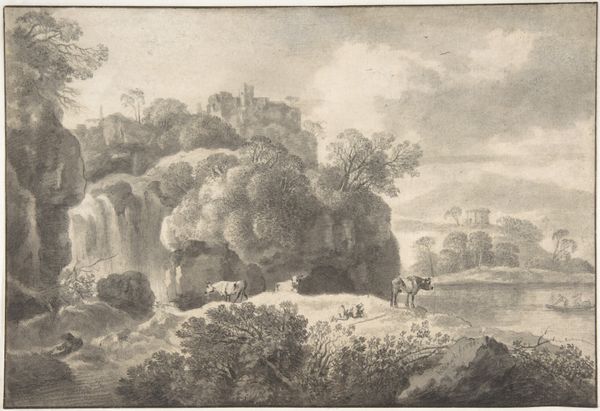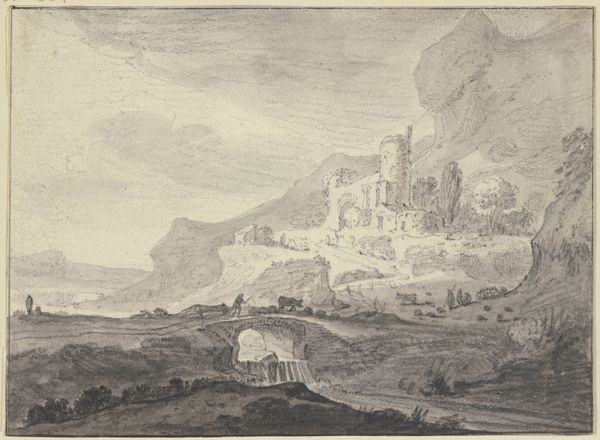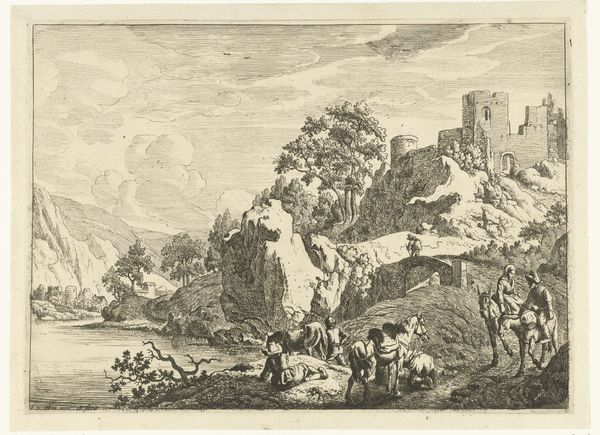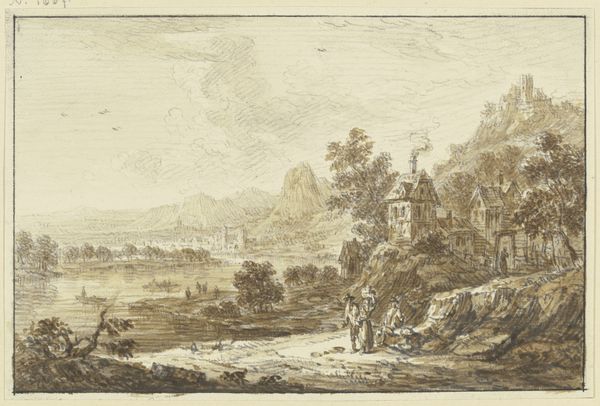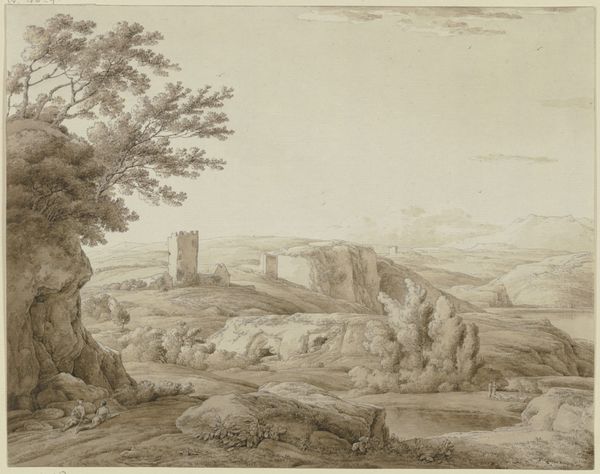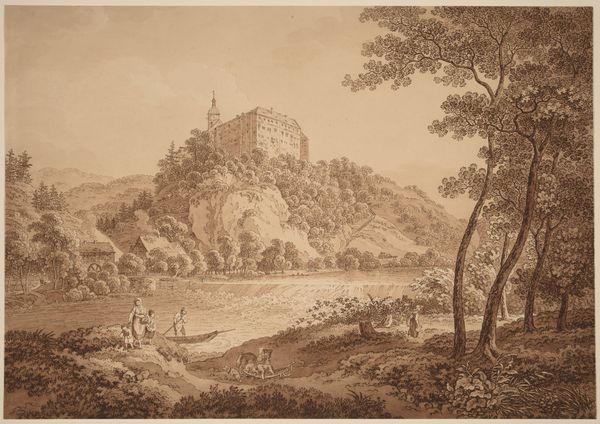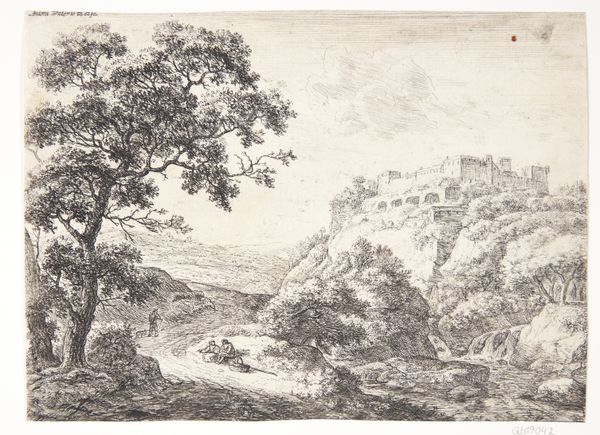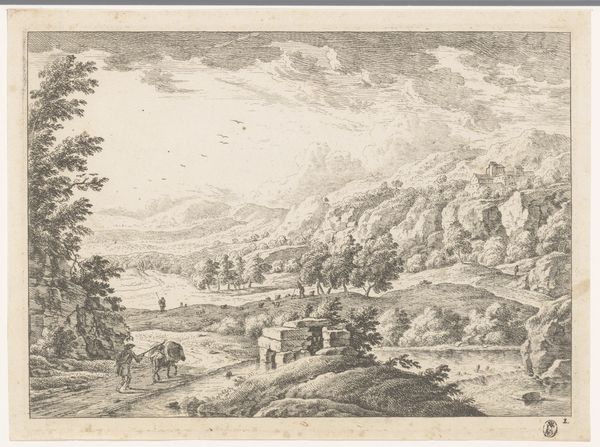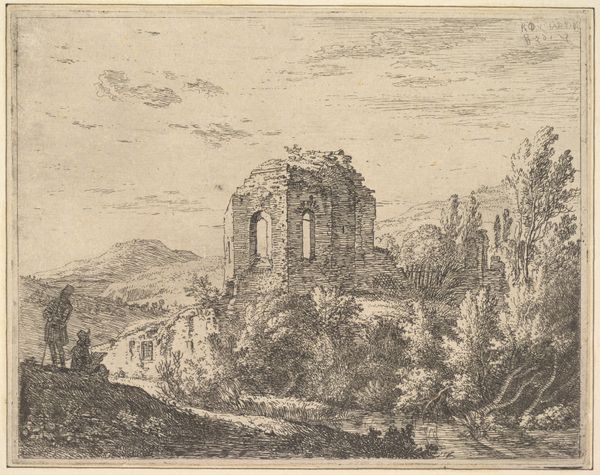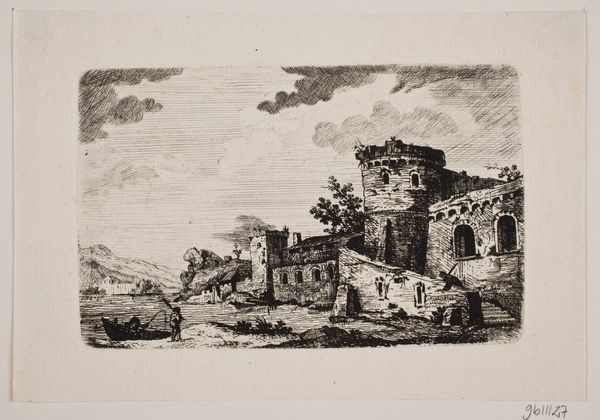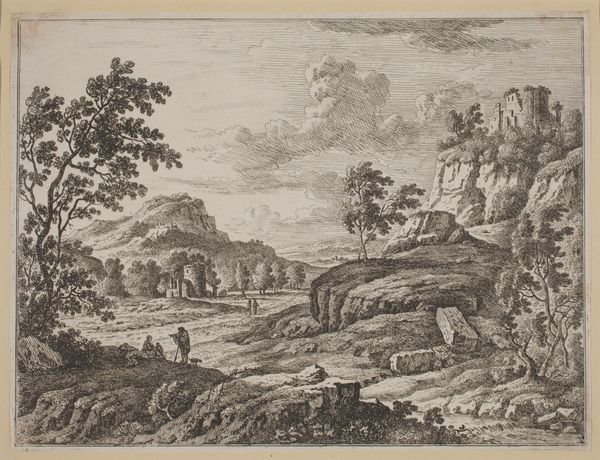
drawing, ink
#
drawing
#
landscape
#
ink
#
romanticism
#
15_18th-century
Copyright: Public Domain
Editor: So, here we have Franz Kobell's "Mountain Landscape with Approaching Storm," rendered in ink. I’m immediately struck by how dramatic it feels. It’s like the landscape itself is a character, about to unleash some serious emotions. What do you see in this piece? Curator: I see a potent example of Romanticism grappling with nature's sublime power. Consider the societal context: late 18th-century Europe was captivated by the idea of untamed wilderness and the insignificance of humanity against it. Kobell, through this landscape, engages in that very dialogue. Notice how the looming storm dwarfs the tiny figures on the path. Who were these landscapes for, and what did it mean to acquire them? Editor: Right, they're practically swallowed up! It feels almost cautionary. I'm also interested in how the ruins are placed high above, perhaps referencing the past in light of the present. Is it unusual to see landscape drawings exhibited? Curator: Good observation. The ruin evokes history, impermanence – a very Romantic sentiment. As for display, remember that drawing was considered a fundamental skill, an essential form of visual communication. Collectors frequently amassed portfolios of landscapes; their display and circulation signified cultural status, and, dare I say, political viewpoints about the relationship between civilization and wildness. Do you notice the particular viewpoint that we the spectator are offered here? Editor: It feels… elevated, almost superior to the wanderers below. Was landscape art, even then, connected to notions of land ownership and privilege? Curator: Precisely! Landscape representation, historically, is tied to power dynamics. Who commissions these landscapes, and whose vision is privileged? This is something that must always be asked. What have you learned by looking at this drawing today? Editor: It's fascinating to consider how even a seemingly 'natural' scene is so constructed, imbued with the societal ideas of its time. I'll definitely be looking at landscape art with a more critical eye from now on. Curator: Wonderful. It's essential to remember that art, however 'untamed' it appears, always speaks to a larger cultural conversation.
Comments
No comments
Be the first to comment and join the conversation on the ultimate creative platform.

